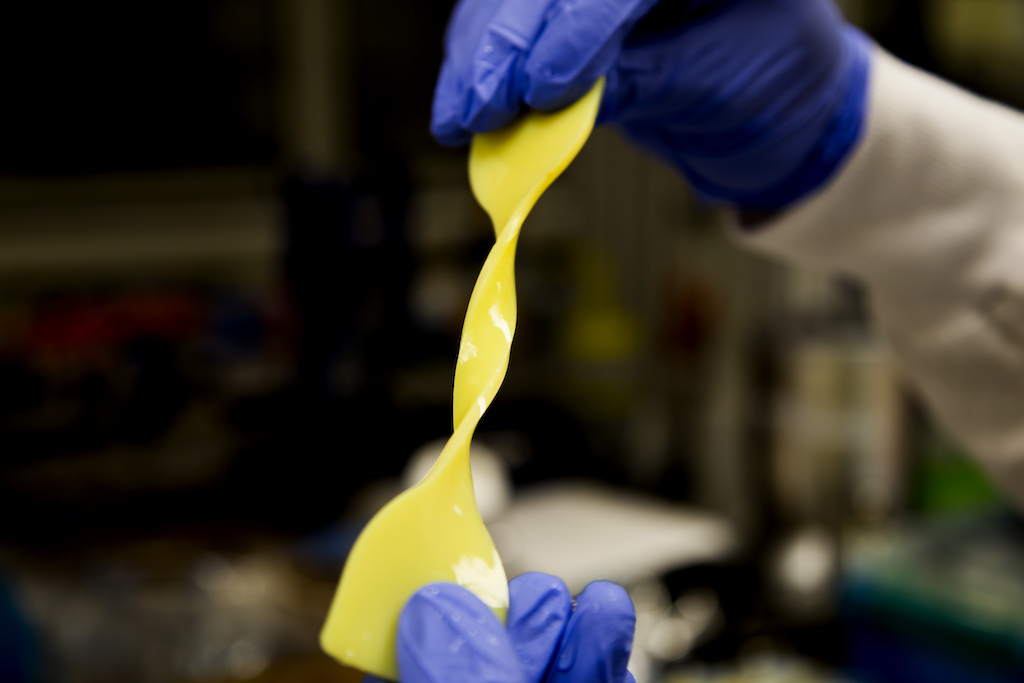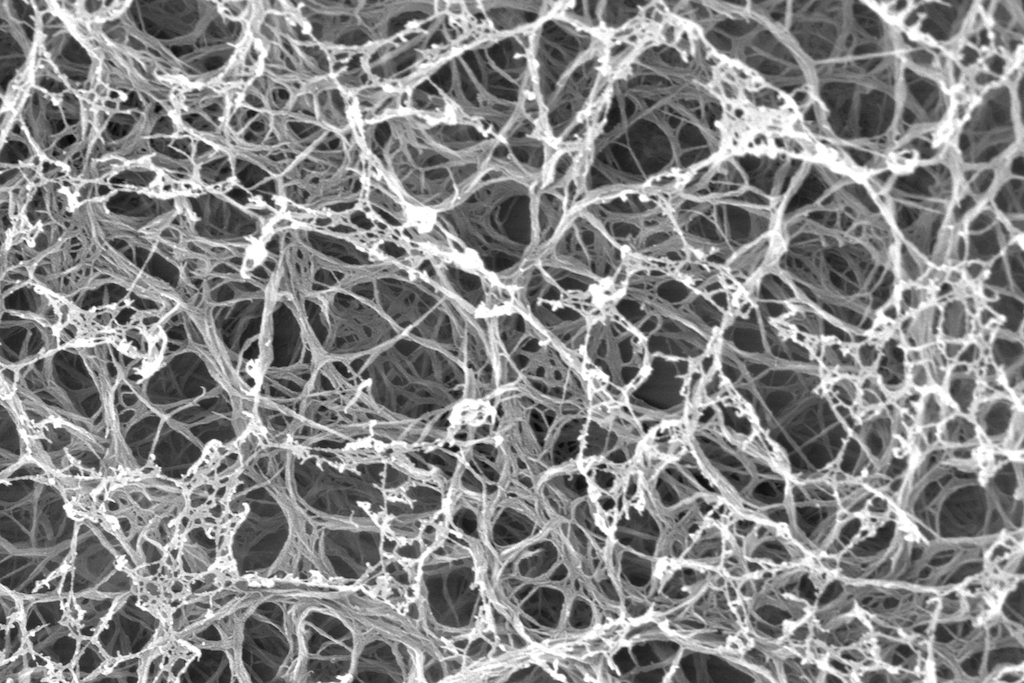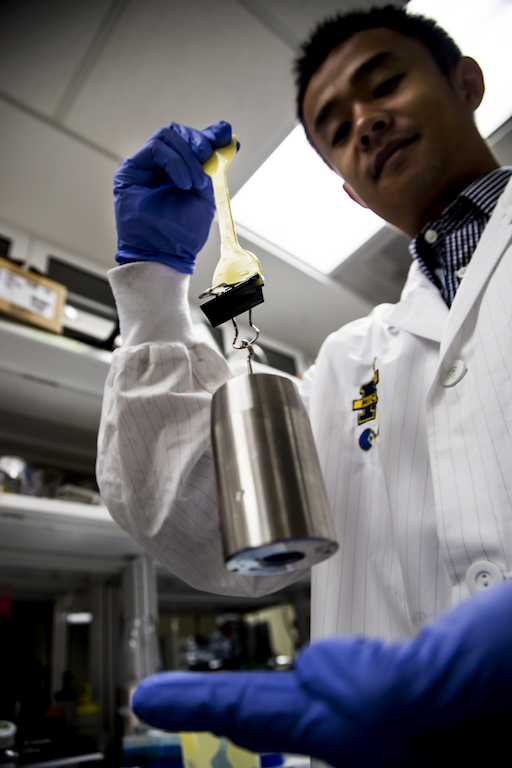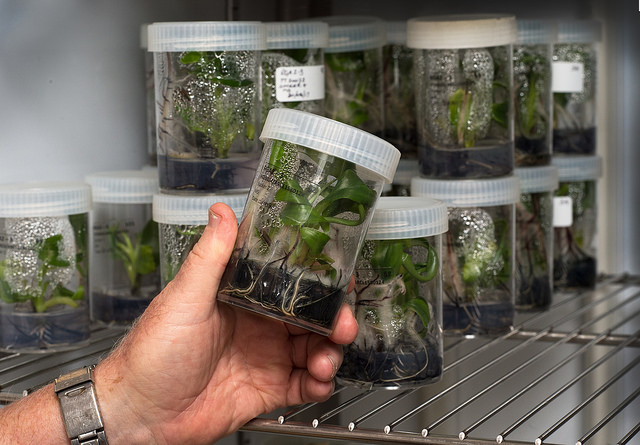

Making artificial cartilage from kevlar
Science has given us titanium joints, eyeball electrodes, and mechanical hearts. Now researchers at the University of Michigan and Jiangnan University are working on kevlar cartilage. Put aside visions of bullet-proof knees, "Kevlartilage" is all about strength under pressure.

Natural cartilage is 80 percent water and it can withstand serious compression. These two properties are an unlikely pair, and synthetic alternatives struggle to match them both. Some come close on strength but miss the mark on liquid content (which is critical because water dissolves vital nutrients). Others trap enough water but tear easily.
The new cartilage ticks both boxes. It's a hydrogel made from long molecules of polyvinyl alcohol (PVA). It traps huge quantities of water, forming a springy gel, and it's laced with Kevlar threads to stop it shredding under pressure.

As the artificial cartilage compresses, water pushes against the network of fibres. The molecules rearrange and liquid leaks out. Then, as the material recovers, it reabsorbs water ready for the next round of compression.
The team hopes that the new material might find its way into high-impact knee implants. And, with a bit of tweaking, they think it might even be possible for cartilage cells to live inside the mesh.
Saving the world's favourite banana
Every banana you’ve ever eaten is a clone. Bred to get rid of the seeds, the plants are hopeless at reproducing on their own. This makes for consistently tasty fruit, but it also makes them an easy target for disease. Every plant is pretty much the same, so an infection only needs to bypass one set of defences.
A fungus called Fusarium wilt tropical race 4 (TR4) has done just that. Panama disease killed the world’s favourite banana, Big Mike, in the 1950s. It's resistant to fungicides and now it’s threatening the Cavendish. But, researchers at Queensland University of Technology have found something that might help them resist.
Sign up to the T3 newsletter for smarter living straight to your inbox
Get all the latest news, reviews, deals and buying guides on gorgeous tech, home and active products from the T3 experts
They borrowed a gene from a disease-resistant wild banana and gave it to the Cavendish. The resulting plants managed to resist infection even in infested soil.
The gene, RGA2, helped one line of bananas to stave off infection for the whole three-year study. Three more only lost 20% of their plants to the fungus. For comparison, between 67 and 100% of normal bananas plants in the same soil became infected.

Cavendish bananas have their own RGA2 gene, so now the scientists are working on how to switch it on. This will take four or five years of work according to Professor James Dale, who lead the original study. But, it could help to save our favourite yellow fruit.
"TR4 can remain in the soil for more than 40 years and there is no effective chemical control for it. It is a huge problem. It has devastated Cavendish plantations in many parts of the world and it is spreading rapidly across Asia.”
Professor James Dale, QUT
Using the universe as a computer
Douglas Adams imagined Earth as a planet-sized computer in the Hitchhiker’s Guide to the Galaxy. Now, physicists at the National Institute of Standards and Technology want to do the same with the universe. They're wondering where we go after quantum computing, and they think the answer might be in the stars.
In this video, physicist Stephen Jordan imagines black holes as supercomputers of the distant future. Though this is still a dream, he thinks that the universe might already hold the answers to some tough computational challenges.
One such tricky question is the Partition Problem. How do you sort huge numbers into two groups so that each group adds up to the same number?

NIST say that we are living inside a solution. The universe has spent 13.7 billion years balancing energy, essentially working on its own version of the problem. By observing space, we could find answers to questions that our most powerful computers still struggle to solve.

